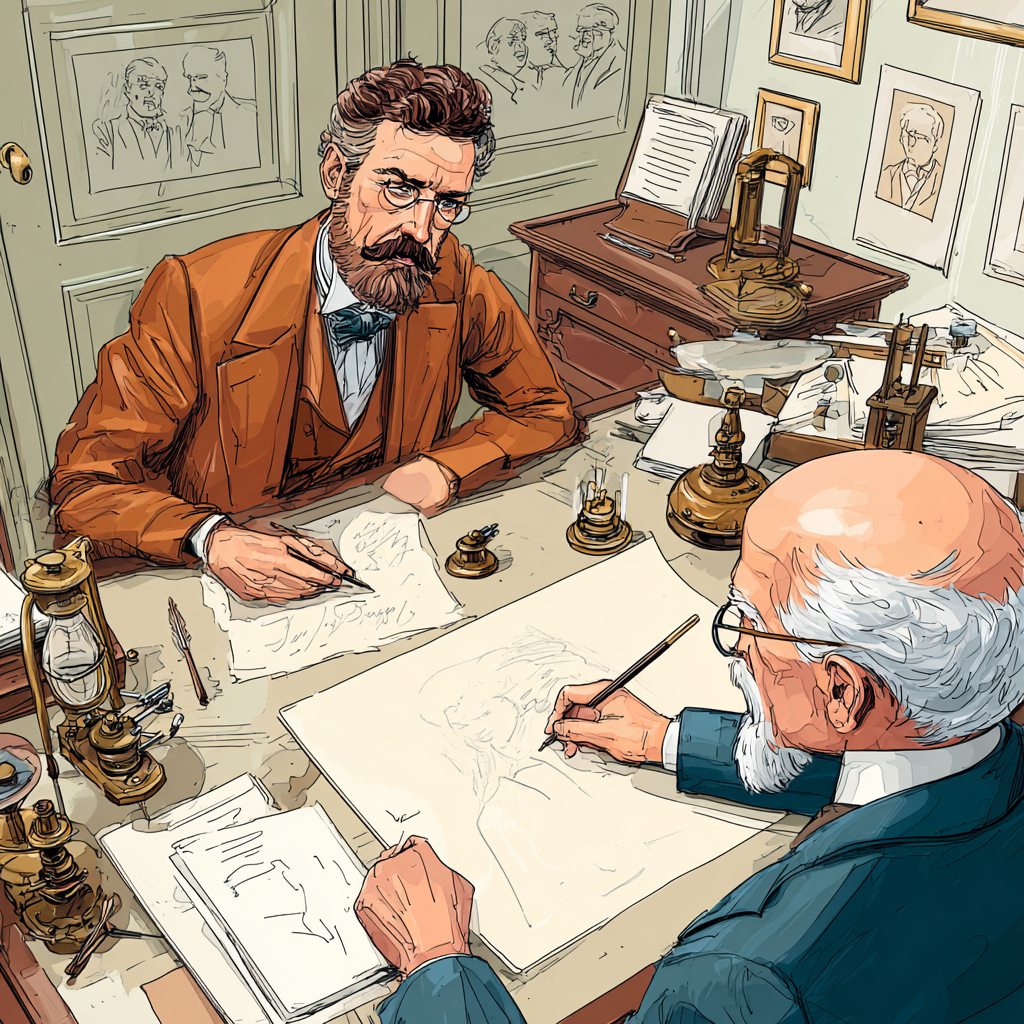Avoiding the Inventor’s Trap: Why NDAs and Prototypes Matter

By a Registered U.S. Patent Agent
If there’s one call I get more often than I’d like, it’s from inventors who say something like this:
"I showed my idea to a manufacturer last year and now they’re selling it without me."
Or, "I pitched my concept to investors, and a competitor launched it two months later—what can I do?"
Unfortunately, by the time you make that call, there may not be much anyone can do.
As a patent agent, I work with inventors at all stages—from napkin sketch to full product launch. And I’ve seen too many smart, passionate people fall into what I call the Inventor’s Trap: sharing a great idea before securing even the most basic legal protections.
That’s what this article is about—how to protect your invention before sharing it. Specifically, we’ll talk about two critical tools: the non-disclosure agreement (NDA) and the prototype. Together, they serve as your first line of defense when dealing with potential investors, partners, manufacturers, or even friends and family.
The Inventor’s Trap: What Happens When You Overshare
Let’s face it—when you invent something new, you’re excited. You want to show it off. You believe in it. And you’re often told by well-meaning mentors to “get out there and validate it.”
That’s good advice—eventually. But validation doesn’t mean exposure without protection. The moment you publicly disclose your invention—by showing it at a pitch event, uploading it to YouTube, or even handing over schematics to a supplier—you’ve potentially started a legal clock and reduced your leverage.
Here’s why that matters:
- In the U.S., you have 12 months from your first public disclosure to file a patent application, or you lose the right to patent it.
- In most other countries, you lose your patent rights immediately after a public disclosure if no patent was filed beforehand.
- If there’s no NDA in place, you may have no legal recourse if someone uses your idea.
“An idea by itself isn’t worth anything unless it’s protected—or executed,” I often tell clients. “You can’t sue for theft if you handed your blueprints over voluntarily.”

Step One: The Power of a Good NDA
A non-disclosure agreement (NDA) is a legally binding contract that prevents someone from sharing or using your confidential information. It’s often your first, and sometimes only, shield when you’re not ready to file a patent but need to talk to outsiders.
When to Use an NDA
You should have an NDA signed before disclosing details to:
- Investors
- Potential co-founders or employees
- Prototype engineers or consultants
- Manufacturers or product developers
- Marketing firms or licensing agents
This doesn’t mean you need one for every casual conversation—but once you’re discussing specifics about how your invention works or is made, an NDA is essential.
What to Include in an NDA
A strong NDA should:
- Clearly define what is confidential (e.g., drawings, methods, designs)
- Specify how long the obligation lasts (often 2–5 years)
- Outline permitted and prohibited uses of the disclosed information
- Include remedies for breach, like injunctive relief or damages
- Cover both parties, if appropriate (mutual NDAs are common in collaborative settings)
If you’re working with vendors or investors outside the U.S., make sure the NDA is jurisdictionally enforceable or backed by reputable parties.
“Think of an NDA as a pre-nup for your invention,” I tell clients. “If things go well, no one ever looks at it. But if they go badly, it could be the only thing protecting you.”
A Note on NDAs and Investors
Many venture capital firms and angel investors will not sign NDAs, especially in early conversations. That’s not necessarily a red flag—it’s standard practice, mainly because they see too many pitches.
Instead of forcing an NDA, focus on limiting what you reveal. Share the problem you're solving and the market opportunity, not the full solution or technical specs. If you must reveal more, consider filing a provisional patent application first (see below).

Step Two: Build a Prototype—Even a Rough One
You don’t need a polished product to get protection—but you do need a clear, tangible representation of your idea. That’s where a prototype comes in.
A prototype is not just for investors or Kickstarter—it’s evidence that your invention works, looks a certain way, or solves a specific problem. Even a simple prototype can:
- Support your patent filing (you need to describe your invention with enough detail to enable someone skilled in the field to make/use it)
- Strengthen an NDA by showing exactly what’s confidential
- Deter copycats, who realize your idea is further along than they expected
- Clarify your own thinking, helping you refine functionality and claims
Low-Fidelity is Fine to Start
Don’t worry about perfection. Your prototype can be:
- A 3D-printed model
- A hand-assembled proof of concept
- A slide deck with technical diagrams
- A video of how it would work
What matters is that it represents the core inventive concept—and that you document it thoroughly. Save your drafts, photos, notes, and test results. They may serve as valuable proof of conception later if there's ever a dispute.
Provisional Patents: Your Secret Weapon
If you’re not ready to file a full patent application, a provisional patent application can give you protection without disclosing your invention publicly or spending thousands upfront.
The USPTO doesn’t examine provisionals, but filing one:
- Reserves your priority date (crucial in a first-to-file system)
- Lets you say “patent pending”
- Buys you 12 months to refine the invention, raise funds, or test the market
- Allows you to safely share more details, since your concept is on the record
A well-drafted provisional should describe your invention in full, include drawings or diagrams, and cover all possible embodiments. Don’t skimp—vague provisionals are hard to convert into strong utility patents.
If you’re working with vendors under NDA and show them a prototype after you’ve filed a provisional, you’ve effectively built a multi-layer shield.
Putting It All Together: Your Pre-Disclosure Checklist
Before you talk to anyone outside your inner circle, ask yourself:
- Do I have an NDA in place?
- Do I have a basic prototype or clear documentation?
- Have I filed a provisional patent application, or am I prepared to?
- Do I know how much information I need to share, and what I can withhold?
If you check at least two of these boxes, you’re on much safer ground than most first-time inventors.
Real-World Cautionary Tale
I once worked with a client who invented a clever kitchen gadget. He pitched it to a domestic manufacturer without an NDA, trusting their handshake. Six months later, the manufacturer launched a similar product—same function, different color—and my client hadn’t filed anything.
Because he hadn’t protected the idea with a patent application or an NDA, he had no legal recourse. The product could have been patentable. But once it was out in the market, it was too late.
Now, compare that with another client—a medical device engineer—who filed a detailed provisional, prototyped using a 3D printer, and required NDAs from every engineering consultant and early investor. Two years later, he secured a licensing deal with a Fortune 500 firm—and his IP was solid.
The difference wasn’t just the idea—it was the preparation.

Final Thoughts from a Patent Agent
Inventing is about creativity. Protecting your invention is about discipline.
It’s easy to get caught up in the excitement of pitching, building, or finding partners—but don’t confuse speed with success. Take the time to cover your bases. An NDA and a prototype won’t make your invention bulletproof—but they’ll give you the leverage, evidence, and protection you need to compete on your terms.
If you’re not sure where to start, talk to a patent professional before you start sharing. It could be the best investment you make on the path from idea to impact.
Want help drafting a solid NDA, building a filing strategy, or getting your prototype patent-ready? I’m a registered U.S. Patent Agent and have helped dozens of inventors protect and commercialize their ideas. Let’s make sure yours stays yours.